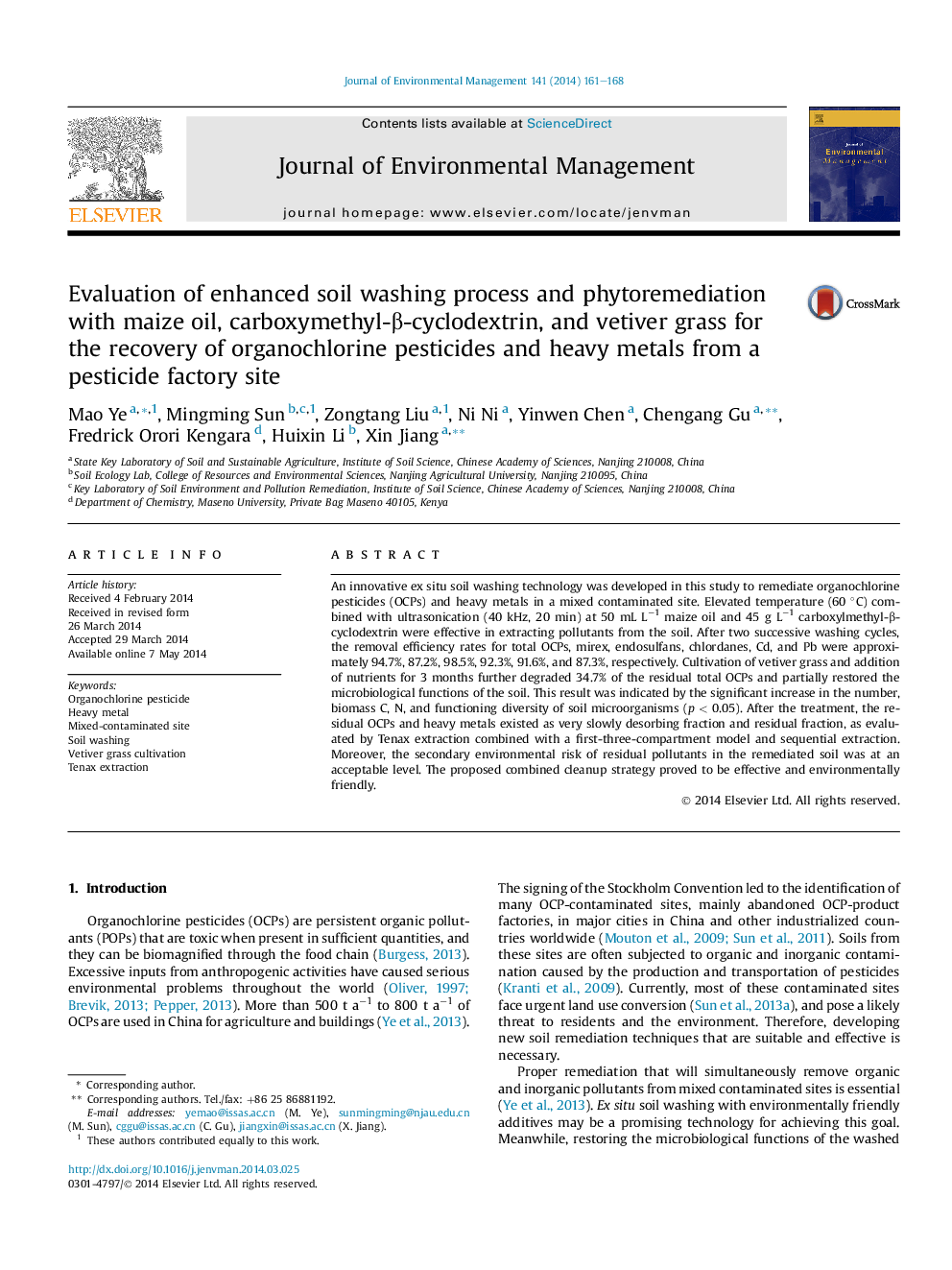| کد مقاله | کد نشریه | سال انتشار | مقاله انگلیسی | نسخه تمام متن |
|---|---|---|---|---|
| 1055920 | 1485271 | 2014 | 8 صفحه PDF | دانلود رایگان |

• Maize oil and carboxylmethyl-β-cyclodextrin were effective for soil washing.
• Two washing cycles combined with vetiver grass cultivation were developed.
• 94.7% of OCPs, 91.6% of Cd, and 87.3% of Pb were simultaneously removed.
• Microbiological functions of the remediated soil were partially restored.
• Environmental risk of residual mixed pollutants was at an acceptable level.
An innovative ex situ soil washing technology was developed in this study to remediate organochlorine pesticides (OCPs) and heavy metals in a mixed contaminated site. Elevated temperature (60 °C) combined with ultrasonication (40 kHz, 20 min) at 50 mL L−1 maize oil and 45 g L−1 carboxylmethyl-β-cyclodextrin were effective in extracting pollutants from the soil. After two successive washing cycles, the removal efficiency rates for total OCPs, mirex, endosulfans, chlordanes, Cd, and Pb were approximately 94.7%, 87.2%, 98.5%, 92.3%, 91.6%, and 87.3%, respectively. Cultivation of vetiver grass and addition of nutrients for 3 months further degraded 34.7% of the residual total OCPs and partially restored the microbiological functions of the soil. This result was indicated by the significant increase in the number, biomass C, N, and functioning diversity of soil microorganisms (p < 0.05). After the treatment, the residual OCPs and heavy metals existed as very slowly desorbing fraction and residual fraction, as evaluated by Tenax extraction combined with a first-three-compartment model and sequential extraction. Moreover, the secondary environmental risk of residual pollutants in the remediated soil was at an acceptable level. The proposed combined cleanup strategy proved to be effective and environmentally friendly.
Journal: Journal of Environmental Management - Volume 141, 1 August 2014, Pages 161–168